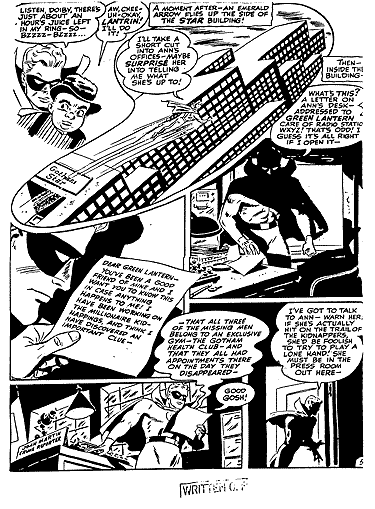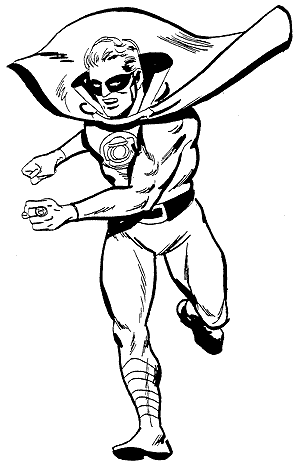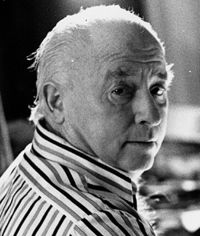- Shop
- Connect
- Customer Service
Shipping
For orders in the USA, we ship by Media Mail from North Carolina, so please allow sufficient time for delivery, especially if you’re on the West Coast.
Please note that US subscription copies are sent by Standard Mail unless you’ve requested the more expensive "First Class" option, and can take from a few days to two weeks or more, depending on the speed of mail delivery in your area. Since we have no control over the US Postal Service’s delivery speed, if getting your magazine before it appears in stores is critical to you, we suggest you select our "First Class" option, or purchase our magazines at your local comics shop.
For international orders, First Class Mail International (only available for packages weighing up to 4 lbs.) usually takes 2-4 weeks. Priority Mail International usually takes 1-2 weeks. Flat Rate shipping usually takes 6-8 weeks (it goes by "Surface" and the minimum charge is for 11 lbs., making it economical only for larger orders). For packages of 4 lbs. or less, the "First Class Mail International" option will generally cost less, and have faster delivery. If you want a larger package (over 4 lbs.) in the quickest time possible, your only option is the more expensive "Priority Mail International".
NOTE FOR PRIORITY MAIL CUSTOMERS: If your order contains a combination of items that are currently shipping, and upcoming items (i.e. ones that aren’t shipping yet), and you choose Priority Mail (or Priority Mail International) as your shipping option, we will send the currently shipping items by Priority Mail, then send the upcoming items by the least expensive way possible as they become available. If you want the upcoming items to also ship by Priority Mail, you’ll need to put each upcoming item on a separate order, so our web store can calculate the additional Priority Mail shipping costs for them.
Thanks for supporting TwoMorrows Publishing!Shop with Confidence

If you are unhappy with the condition of an item you received, or were sent an item you didn’t order (or are missing an item you did order), please contact us at 919-449-0344 or e-mail to twomorrow@aol.com and we’ll do everything possible to correct the problem.
Welcome to our Store!
In 1989, my wife Pamela and I started TwoMorrows Advertising in Raleigh, North Carolina, providing advertising and graphic design services to local and national accounts. ("TwoMorrows" is a play on our last name-there’s two of us!) In early 1994, after hearing of Jack Kirby’s death, I (being a lifelong Kirby fan) dug out my Kirby comics and, after spending that Spring re-experiencing what had drawn me to Kirby’s work originally, decided to produce a newsletter about him in my spare time. The result was THE JACK KIRBY COLLECTOR #1 in September 1994, mailed free to 125 other Kirby fans.
TJKC quickly caught on, and things snowballed from there. In 1998, we teamed with editor Jon B. Cooke to produce the Eisner Award-winning Comic Book Artist, followed by the revival of Roy Thomas’ 1960s fanzine Alter Ego in 1999 (another Eisner Award winner for us). Mike Manley’s DRAW! (the professional how-to magazine about comics, cartooning, and animation) debuted in 2001, and Danny Fingeroth’s WRITE NOW! (offering tips and lessons on writing for comics) premiered in 2002. In 2004, we launched BACK ISSUE! magazine (edited by Michael Eury), covering comics of the 1970s, ’80s, and today, and in 2006, we spun the ROUGH STUFF section of BACK ISSUE! into its own magazine (edited by Bob McLeod), celebrating the art of creating comics. In 2008, we launched BRICKJOURNAL, the ultimate magazine for LEGO enthusiasts. And Jon B. Cooke has returned to TwoMorrows in 2013 with the launch of COMIC BOOK CREATOR, the new voice of the comics medium.
In addition, we publish a line of highly respected and award-winning trade paperbacks, encompassing a wide variety of interests. But regardless of what time period or genre we cover, we always try to provide our readers what they want: in-depth coverage of comics (and LEGO!) history and creators, with a fun, positive slant, in the most professional manner possible.
Since 1994, we’ve been showing fans the future of comics (and now LEGO®) history. Sample any of our publications, and join the revolution!
John Morrow, publisher

Alter Ego 1 - Irwin Hasen Interview"So I Took The Subway And There Was Shelly Mayer..."An Interview with Golden Age artist Irwin Hasen, conducted by Roy Thomas, transcribed by Carla Conway
For most of the 1940s, with time out for World War II, Irwin Hanan Hasen was a major artist at National/DC Comics' sister company All-American Comics. While he is noted mostly for his two stints as a primary artist of the Golden Age Green Lantern, between 1946-49 he also did some of the best work in All-Star Comics, before becoming the original artist (and later writer, as well) of the long-lived Dondi newspaper comic strip. The following phone interview was done in late 1998.--Roy Thomas Alter Ego: In his Who's Who of American Comic Books, Jerry Bails
lists your nickname as "Zooie." How did that happen? A/E: This must be an error in Jerry's book. It says you were born
in 1918. But you can't be eighty years old. A/E: You had to go all the way across the street, huh? A/E: What years did you go to the National Academy of Design? A/E: Joe Kubert tells me he and Lee Elias and Frank Giacoia and Carmine
Infantino all worshiped Alex Raymond and Hal Foster and Milt Caniff--but Caniff
was the one they could copy easiest, because he had the most direct style for
comic books. Did you have that feeling, too? A/E: You started out freelancing for comics shops like Chesler and
Bert Whitman--and Lloyd Jacquet--that was Funnies, Inc., right? Did you know
Bill Everett and Carl Burgos there? A/E: You found out only in the past few years that you did the very
first Cat-Man story for Holyoke, didn't you? A/E: Since the Batman, Superman kind of heroes obviously weren't
what drew you to comics, what did you think of the idea of drawing that kind
of character? Did it make any difference to you? A/E: That was the All-American branch. A/E: You were the first artist after Martin Nodell to do Green Lantern
regularly, though E.E. Hibbard did one or two in '41, too. How did it
come about that you wound up doing GL stories? A/E: I met him once or twice in the 1960s. I'm sorry I didn't
get to know him better. It took years for him to get his proper due. One of
the first times he had a credit on a strip was when you and he created Wildcat
together for Sensation Comics #1 in '41. He became the second most successful
feature in it, after Wonder Woman. A/E: But it says "Irwin Hasen and Bill Finger" on Wildcat,
for the first couple of issues. A/E: Someone told me once that DC might have wanted to make sure Finger
got a byline because they felt he'd gotten a little bit of a shaft by
not getting one on Batman. A/E: What kind of guy was Shelly Mayer to work for? A/E: I think it was Alex Toth who told how as a young man he was in
Mayer's office and suddenly you popped in, and you and Mayer began fencing
with invisible swords for several minutes, up on furniture, all over the desk.
Did this happen more than once, or was it just to impress Toth? A/E: He was a cartoonist. A/E: I believe he created Sugar and Spike to be a newspaper strip originally.
It didn't work out that way, but it became a successful comic book for
quite a few years. It lasted longer than a lot of strips. Not Dondi, but still,
Mayer is very much respected by people who know comic books, though he's
not known by the more casual reader. A/E: The desire of so many people who went into comic books was to
eventually do a comic strip. But Dondi wasn't the first strip you did,
was it? You did the Goldbergs strip at one time. A/E: Few achieved the goal of doing a comic strip, especially starting
a new strip as opposed to taking over an existing one. A/E: I didn't see your early-'40s work until the '60s,
but I can understand why it went over. You have a nice, simple, clear style. A/E: Even though he's a little taller than you?
A/E: They definitely had two of the most distinctive styles up at DC.
I looked for their work as a kid, along with Simon and Kirby. But your own
work and that of Lee Elias and the early Carmine--there were a lot of good
artists up there. I know Toth and Kubert both denigrate their early work, but
those 1940s Green Lanterns and Johnny Thunder westerns Toth did, and Kubert's
late-'40s Hawkman and of course his Tor from the early '50s--those
hold up well with any comic artwork you'll see anywhere, anytime. A/E: And your work had its own virtues. That's why, even in the
early '40s, you wound up doing a lot of covers for Green Lantern and All-American. A/E: I think you were considered a cover artist the same way Shelly
Moldoff and Howard Purcell were, earlier. There are certain people who have
the right sense of design to do covers. I was telling Al Feldstein recently
how, when Woody Gelman of Nostalgia Press wanted to put a Wally Wood or Al
Williamson cover on the first hardcover EC collection back in the '60s,
Bill Gaines insisted it have a Feldstein cover. Gaines said, "Al's
covers always sold better! He's the one who made money for me." A/E: Were you and Joe Kubert close friends around 1947? That's
when the photo I've seen of the two of you roughhousing was taken. Or
rather, Joe looks like he's roughhousing and you're being roughhoused. A/E: By the time you drew Green Lantern in All-American and All-Star
in '41, you were already drawing some Green Lantern covers, too. You didn't
have any relationship with Marty Nodell? A/E: A few times in the early '40s you inked Nodell's pencils.
How did that happen? A/E: I cannot tell a lie, it was Jerry Bails who pointed it out. You
did the first story with Doiby Dickles, the cab driver, didn't you? What
was he--Lou Costello with a Brooklyn accent? A/E: So why didn't you do more writing? You obviously had some
ability to put words together. A/E: After the war, a few artists have said they had trouble getting
their jobs at DC back when they came out of the service. Did you have any trouble
like that? A/E: If the Nazis attacked Hoboken, they were sending you in? A/E: But you sneaked up to New York occasionally to do a cover? A/E: He came in in '44. Some of your first postwar work was the
Atom chapter in All-Star #31, that I sent you a copy of. Kozlak did the first
page or so, then suddenly the rest of story is by you. Do you know how that
happened? A/E: You're not in the next issue, but then, in #33, you suddenly
started doing the covers and the openings and the conclusions. I also sent
you a copy of that Wheaties giveaway issue of Flash Comics; if you bought two
boxes of Wheaties, you got that comic. Kubert did Hawkman, and you did Flash
and Johnny Thunder and the cover. The Flash story you drew was odd, because
a couple of years later you drew two Green Lantern stories with almost exactly
the same villain, only with a different name--a "last criminal" from
the future. Do you remember that character? His name was Andar, or Knodar,
or... A/E: He had this prison costume with "P's" all over
it, very inventive. And he's almost exactly the same character as "Dmane" in
the Flash giveaway two years earlier. Do you know who wrote either of them? A/E: For a couple of years in '46-'47, Green Lantern was
drawn in All-American by Paul Reinman. I liked his work. But when you came
back, except for one or two Reinman GL stories probably from inventory, he
was suddenly relegated to backup features like Black Pirate. Do you know why
he fell out of favor? A/E: For some reason, several pages of the art from one of your first
postwar Green Lantern stories, in All-American #85, which came out in early '47,
seem to have survived in the hands of various collectors. Did you ever have
a desire to get your originals back? A/E: In the early '70s, Marvel and DC started giving the original
artwork back. About the covers you did--sometimes you'd do a Green Lantern
cover that had nothing to do with the insides. Did you ever do a cover where
they just said, "Do a cover and come up with a scene?" A/E: You probably mean Green Lantern #4, back in '41-'42.
GL was marching as Alan Scott, with Green Lantern's image towering over
them. A great cover! But of course that did have something to do with the story
inside. You probably don't remember because you didn't draw that
story. Martin Nodell did. A/E: Did Shelly describe them verbally? Did he ever draw a sketch? A/E: Occasionally there'd be a splash page which used the same
art as the cover. I suppose the splash page usually came first, because whenever
anyone had a script to draw, it always had a splash page, right? A/E: Did you know writers like Henry Kuttner and Alfred Bester, who
did some Green Lantern stories? A/E: I get the idea that if there was a halfway star writer at DC in
the late '40s, it might have been Bob Kanigher. A/E: He had a hand in creating a lot of the major villains after the
war, when they went in more for super-villains. The one he is most associated
with was The Harlequin. A/E: I'm curious--did you design that Harlequin costume with the
little tutu, or did Kanigher? A/E: There was one issue of Green Lantern where you drew all three
stories--and they were all Harlequin stories! She was in a lot of GL stories
for about a year, and then she vanished, so I guess she wasn't as popular
as they'd hoped. But obviously Kanigher liked her and the editors liked
her. I liked her, too. In fact, I had her and Alan Scott get married back in
the '80s, at age 60 or so. I thought with Molly Mann [The Harlequin's
secret identity] having chased Green Lantern around all those years, she should
come back into his life and marry him. A/E: You also drew the first Icicle story and cover. Icicle was also
in an Injustice Society story you drew part of.... A/E: Well, I know a little about your professional life. As you drew
those last few Green Lanterns and All-Americans and Comic Cavalcades, did you
have any sense that super-hero comics were on the way out, and that All-American
would soon become All-American Western? A/E: This was still '49 or so. You worked for DC for another two
or three years after that. What did you do for DC after the super-heroes faded? A/E: They weren't all that great. When we're talking about
Toth and Kubert, anybody would have had competition--but they had a lot of
losers at DC, too. And I don't mean you.
A/E: What did you do when you came back? A/E: I notice that some of the late Green Lantern stories you did in '48, '49,
had a slightly looser look. Was this all still you, or were you working with
another inker, like Bob Oksner or Joe Giella or Frank Giacoia? A/E: Besides that cartoon you did in '41, what was your impression
of Max Gaines? A/E: That boating accident.... A/E: What about E.E. Hibbard, whom you drew in that cartoon? A/E: You knew Carmine Infantino pretty well. A/E: I recall this press conference in the Allied Chemical Tower in
New York in the mid-'70s, when Neal Adams was beating the drum for Siegel
and Shuster to get pensions from DC because of the announced Superman movie.
I was there representing the Academy of Comic Book Arts, and I read a statement
on their behalf. Reporter Pete Hamill was there--and another thing that was
there was your drawing of Dondi with a tear in his eye for Siegel and Shuster. A/E: Of course, Carmine wasn't the guy who took away Siegel and
Shuster's rights. You weren't attacking him. A/E: It was a difficult period. Did you know Frank Giacoia well? He
was buddies with Carmine and Gil in the old days. A/E: Julie Schwartz--you once drew a picture of him and referred to
him as a chipmunk. A/E: In '49 Sheldon Mayer left the editorship, and Whitney Ellsworth
was suddenly listed in all the books as the editor. There's a change in
the flavor of the books then, even though he evidently wasn't that "hands-on" an
editor. He was a guy who really despised working in comics, from what I've
heard. A/E: And he ended up in Hollywood working on the Superman show. I get
the impression that writers and artists worked on books with Kanigher or Julie
or Weisinger, but not with Ellsworth himself. Yet they never put those guys' names
in the indicia as editors back in the '40s or '50s. A/E: How did it happen that you took over the All-Star assignment? A/E: DC had had Martin Naydel drawing the JSA chapters in All-Star.
He was actually more of a funny-animal artist, a fairly good one. He drew the
Flash very stiffly, and did the same with the JSA, yet they had him on it for
two or three years. A/E: I remember that when I saw your issues, starting with #33, I liked
them better, even at age six and seven, and thats still my judgment more than
fifty years later. In that same issue Kubert came back to Hawkman, and the
next issue Lee Elias began doing Fla'sh, and Carmine and Alex Toth came
along a little later, and suddenly the quality of All-Star and other comics
jumped. In retrospect, I realize some of these artists were returning from
the service, and the guys they were replacing had been the equivalent of those
one-legged baseball players and the like who stood in for major leaguers during
the War. You took over Green Lantern after two issues by Howard Purcell, and
suddenly you were doing a lot of GL in All-American and Comic Cavalcade. Did
you always know which book you were doing a Green Lantern story for? A/E: How much work did you do on an average day when you were drawing
things like Green Lantern? A/E: Jack Burnley has said he hated drawing seven, eight, nine super-heroes
in the Justice Society chapters of All-Star. How did you feel about that? A/E: Actually, you did the introductions and conclusions to a whole
mess of Justice Society issues. One issue you did the entire 38-page JSA story,
and that had eight heroes in it. A/E: When you mention drawing Wonder Woman, wasn't that just covers? A/E: After they got away from H.G. Peter covers. The first All-Star
cover re-creation you did, you've said, was the one you did for me back
in the late 1980s--the one with the hourglass, "The Day That Dropped Out
of Time." How would a dramatic symbolic idea like that have come about?
Would that have been your idea, or Shelly Mayer's? A/E: Although people like Julie Schwartz and Bob Kanigher and Ted Udall
were editors of those books, you worked mostly with Mayer? A/E: The All-Stars you drew were by a combination of Fox, Kanigher,
and Broome, but you were probably just handed the scripts by Mayer. A/E: You also drew me a re-creation of your Solomon Grundy All-Star
cover for #33 and the Injustice Society one for #37, and the cover of #36,
the one with Superman and Batman. Now, that cover was originally by Winslow
Mortimer, wasn't it? But it had some figures on it that were lifted from
you--and from Kubert, H.G. Peter, maybe Lee Elias... A/E: You're the only artist who ever drew a whole issue of All-Star--#39.
It was 38 pages long. I know you have no idea of why they assigned you the
whole story, against their usual practice--but how long would it have taken
you to do something like that, pencil and ink? A/E: You also did that big golden robot cover--#42. You re-created
that one for me, too.... I've got a total of five of them. How many cover
re-creations do you think you've done? A/E: Green Lantern #29. That's the issue I mentioned earlier with
three separate Harlequin stories in it. You not only did the cover, but you
drew the entire interior--all three 12-page stories. A/E: There's no connection between the three stories. It's
like DC had a whole bunch of Harlequin stories sitting around, and they said, "Hey,
let's put 'em all in the same issue!" I don't think anybody
besides you ever drew any of those eight or ten Green Lantern-Harlequin stories. A/E: So how did Dondi happen? A/E: Do you still have that letter? A/E: It happens. And you were right. Maybe it's just because the
Korean War was so recent in my young memory in 1955 when the strip started,
but I always thought of Dondi as Korean. He was really Italian, right? A/E: The strip, of course, lasted over three decades.... A/E: You wound up in the Dondi movie yourself, as a police sketch artist,
drawing him when cops were searching for him. A/E: How popular was Dondi at its height? A/E: At what point wasn't the strip worth doing anymore? A/E: Of all the things you've worked on over the years, Irwin,
which one are you proudest of? |
 >
>
 Become a Fan
Become a Fan Follow Us
Follow Us Subscribe
Subscribe Our Blog
Our Blog




